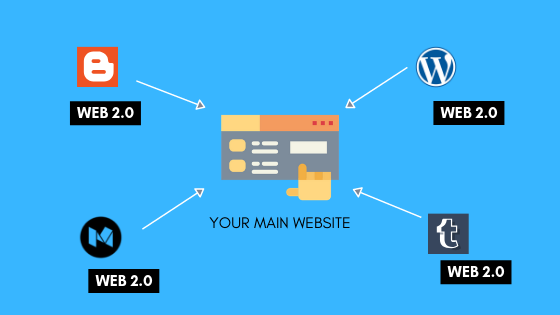In the rapidly evolving landscape of digital marketing, the advent of Web 2.0 has significantly transformed the strategies adopted by businesses, especially when it comes to Search Engine Optimization (SEO). This new era of the internet, characterized by user-generated content, enhanced interactivity, and social media engagement, has shifted how search engines rank content and how businesses approach their online presence.
Understanding Web 2.0
Web 2.0 represents a fundamental change from the early days of the internet (often referred to as Web 1.0), where content was static, and user interaction was minimal. In contrast, Web 2.0 empowers users to create, share, and collaborate through platforms such as social media sites, blogs, wikis, and forums. This transition has not only democratized content creation but also redefined relationships between consumers, brands, and information dissemination.
Content as King and Community as Queen
In the context of SEO, the age-old saying that "content is king" is still relevant, but it is now paired with the understanding that "community is queen." Web 2.0 has placed substantial emphasis on content that resonates with users and fosters community engagement. Here are several ways in which Web 2.0 impacts modern SEO strategies:
1. User-Generated Content (UGC)
User-generated content (such as reviews, comments, and social media posts) plays a crucial role in enhancing SEO efforts. Search engines like Google appreciate diverse content that originates from real users, as it demonstrates authenticity and relevance. Encouraging users to leave feedback or share experiences can improve engagement metrics, which are significant ranking factors.
2. Social Signals
While the direct influence of social media on SEO rankings remains debated, social signals—likes, shares, and comments—are crucial for generating visibility and traffic. An active presence on social platforms can lead to increased brand awareness, which often translates into more backlinks and traffic to primary websites, critical components of effective SEO.
3. Blogging and Content Marketing
Blogging has become a foundation of content marketing, allowing brands to position themselves as thought leaders in their industries. By creating high-quality, informative blog posts and using platforms like Medium or LinkedIn, businesses can reach wider audiences. Furthermore, interlinking blog content not only improves the user experience but also allows search engines to crawl the site more effectively, boosting organic rankings.
4. Community Building
Fostering an online community through forums, social media groups, or interactive content allows brands to engage more deeply with their audience. This engagement can lead to increased time spent on-site and lower bounce rates—both of which are indexed positively by search engines. A well-nurtured community can create a loyal customer base ready to advocate for the brand, further enhancing its online presence.
5. Multimedia Content
The rise of Web 2.0 has also brought about a surge in multimedia content, such as videos, podcasts, and infographics. Search engines are increasingly prioritizing diverse content types to cater to users’ preferences. For SEO, incorporating multimedia can improve user engagement and retention, leading to better rankings. Platforms like YouTube or Vimeo can be leveraged to drive traffic back to the primary site through strategic descriptions, tags, and links.
6. Local SEO and Social Proof
Local SEO has been revolutionized by the integration of social platforms. Geo-targeted social media interactions and user reviews on platforms like Google My Business can greatly influence local search rankings. Positive reinforcement from social proof—user reviews and ratings—helps build credibility and authority in both local and national searches.
Conclusion
In essence, Web 2.0 has redefined modern SEO strategies by emphasizing the importance of community engagement, content quality, and social interaction. The focus has shifted from mere keyword optimization to cultivating genuine relationships and creating a valuable user experience. Businesses that effectively harness the power of Web 2.0 can improve their online visibility, establish authority within their niche, and ultimately drive higher conversion rates. As we move forward, adapting to the trends of Web 2.0 will remain crucial for any comprehensive SEO strategy, reminding us that the dynamic nature of the internet requires constant evolution and responsiveness.
The Role of Web 2.0 in Modern SEO Strategies
The Role of Web 2.0 in Modern SEO Strategies
- Weight Loss Supplements
- https://www.youtube.com/@
WeightLossSupplementsHQ - Health & Wellness
- https://www.youtube.com/@
Health-WellnessHQ - Weight Loss Diets
- https://www.youtube.com/@
WeightLossDietsHQ - Weight Loss Drinks
- https://www.youtube.com/@
WeightLossDrinksHQ - Nagano Tonic Reviews
- https://www.youtube.com/@
NaganoTonicReviewsHQ - Sumatra Slim Belly Tonic Reviews
- https://www.youtube.com/@
SumatraSlimBellyTonicReviewsHQ - Honest Product Reviews
- https://www.youtube.com/@
HonestProductReviewsHQ - Weight Loss & Fitness
- https://www.youtube.com/@
WeightLossFitnessHQ - Dietary Supplements
- https://www.youtube.com/@
DietarySupplementsHQ - Supplements for Weight Loss
- https://www.youtube.com/@
SupplementsforWeightLossHQ - Fat Burner
- https://www.youtube.com/@
FatBurnerHQ


